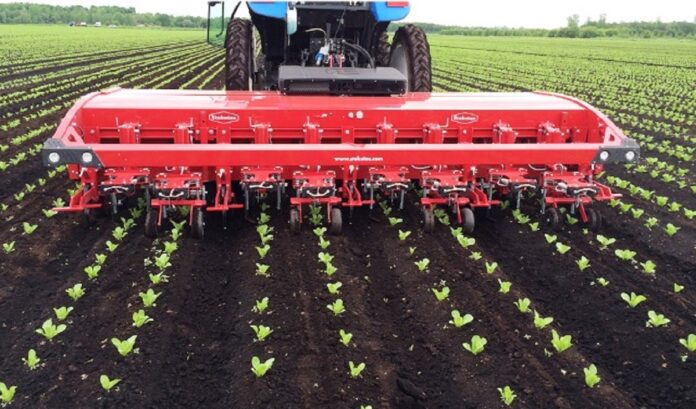Farm mechanization is simply the use of machines for farm operations like land preparation, planting, harvesting, irrigation, carting, processing and many more. These machines can be large or small, moving or stationary.
Importance of Farm Mechanization
Read Also: 17 Most Important Crop Farm Machines and Implements for Big Farms
1. Lower Cost of Labour
Farm machines can do more at the same cost of an activity. However, you best realize this when you do intensive or large scale farming. You reduce the cost of production greatly with mechanization.
2. Increase in Production
With farm mechanization, you can carry out farming operations much faster. This means you can do more work within a specified space of time. “The ploughman with his three-horse controlled three-horse power, when given a medium-sized crawler tractor controlled between 20 to 30 horsepower. His output, therefore, went up in the ratio of about 8: 1.” according to D. R. Bomford.
3. Increases Yield
A typical example is the planting of maize and other cereals. Plant population is key to achieving high yields. You can achieve a higher plant population per area with the use of planters. Correct and uniform planting distances are hard to achieve with manual labour. It is highly improved with a planter.
Read Also: How To Effectively Maintain Farm Tools to Increase Efficiency and Avoid Breakages
4. Aids Commercial Agriculture
Mechanization moves you from subsistence agriculture to commercial. With the intensity and the level of production, mechanization reduces cost and improves efficiency. These are key to a successful commercial farm.
5. Improvements in Agricultural Technology
The use of mechanized irrigation has immensely improved crop production. It is a better way to ensure crops are supplied with enough water and plant nutrients when needed.
The creation of ridges and beds are much accurately done with mechanization. Land preparation by ploughing and levelling of depressions, removal of tree stumps and terracing and much easily done with mechanization.
6. Increase Availability of Labour
Where there is not enough human labour in agriculture, the use of machines come in as a better replacement. Farm mechanization can also lead to lesser numbers of persons on farms. The surplus manpower may be available for other economic activities.
7. Protection From Chemicals
In the typical instance of applying agrochemicals, either for the purpose of weed or pest control, farmers may be exposed to these chemicals. Poor handling of these agrochemicals during application may be extremely harmful. With the use of mechanization, machines do the application.
Read Also: What Has Been the Positive Impact of ICT In Agriculture in Africa?
Limitation in Farm Mechanization
As much as mechanization is recommended, it has its own shortcomings.
1. Mechanization is encouraged on large commercial farms. The case really is, most of the farmer population operate farms that are too small to be mechanized.
2. Agricultural mechanization can result in agricultural workers becoming unemployed.
3. Illiteracy rate among the farmer population is very high. This makes the operation of complex farm machine a challenge.
4. Mechanization may not necessarily increase the productivity of the land. Farmlands are losing their productivity and more so are becoming scarce. In this case, increasing the productivity of the land is as important as increasing labour productivity.
5. Lack of spare parts, service centres, and power shortages are major hindrances in the adoption of mechanization. No spare parts when the machine is broken. They need to be imported increasing the cost. No service centres with expertise to fix broken down machines. Fuel shortages, so no fuel to power the machines.
Read Also: Catalogue of Agricultural Tools, Implements and Machinery and Their Uses
Way Forward In Farm Mechanization
How can we promote mechanization among the farmers?
1. Provision of credit facilities by governments to farmers who are willing to buy the machinery individually or as a group.
2. Government should establish stations to develop different machine parts for the tractors and servicing facilities. Farmers can access this at subsidized rates.
3. Smaller and cheaper types of machines can be introduced to the farmers. The labourer can use it to do the work more efficiently.
“Mechanisation should not be introduced in a hurry, or on a too large scale. To be successful it should be gradually expanded and kept within proficiency standards of those who operate it.” – FAO.
We invite you to join the discussion by commenting.


